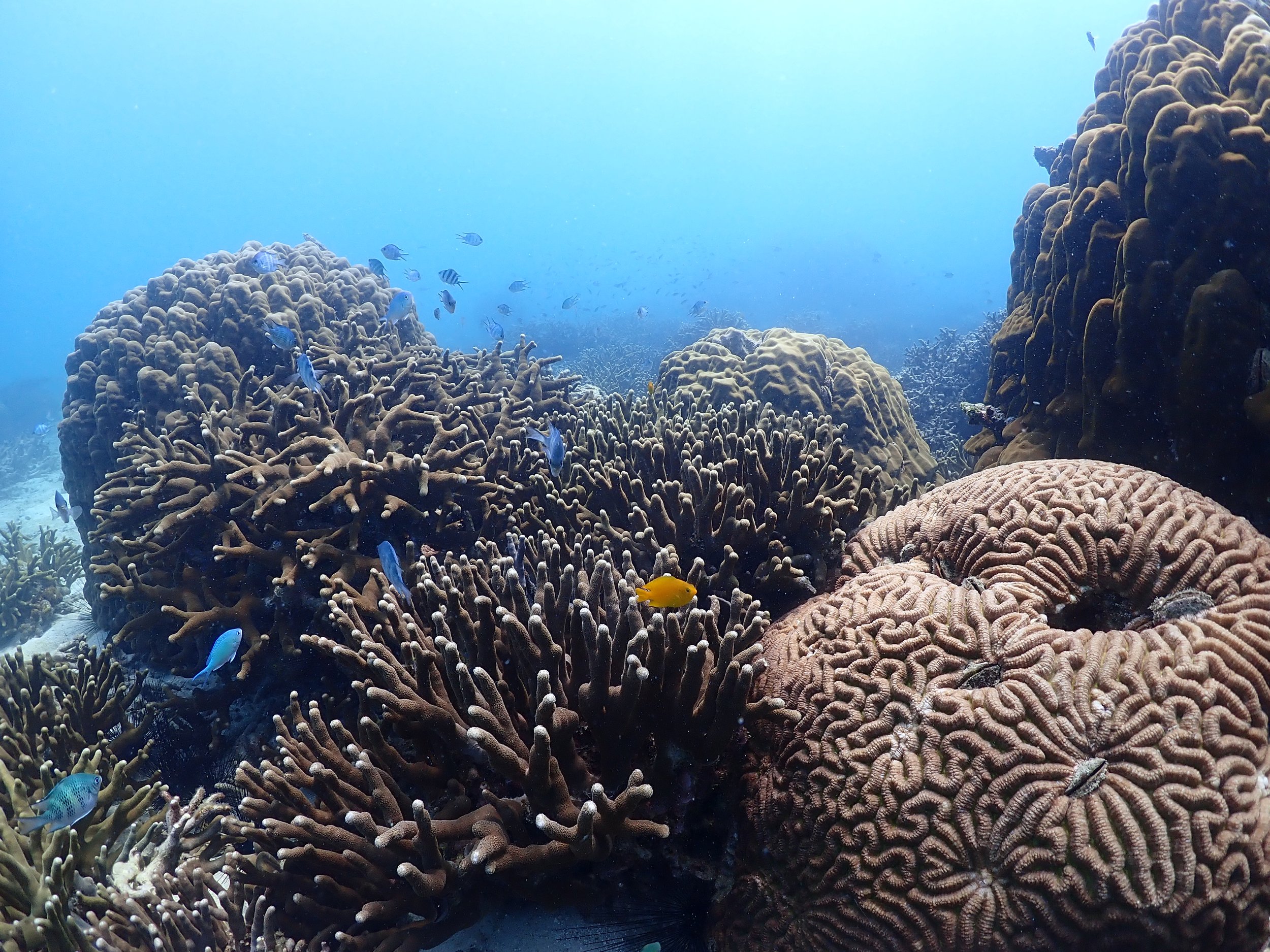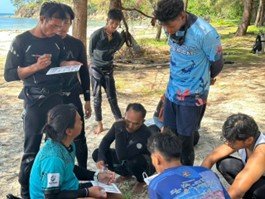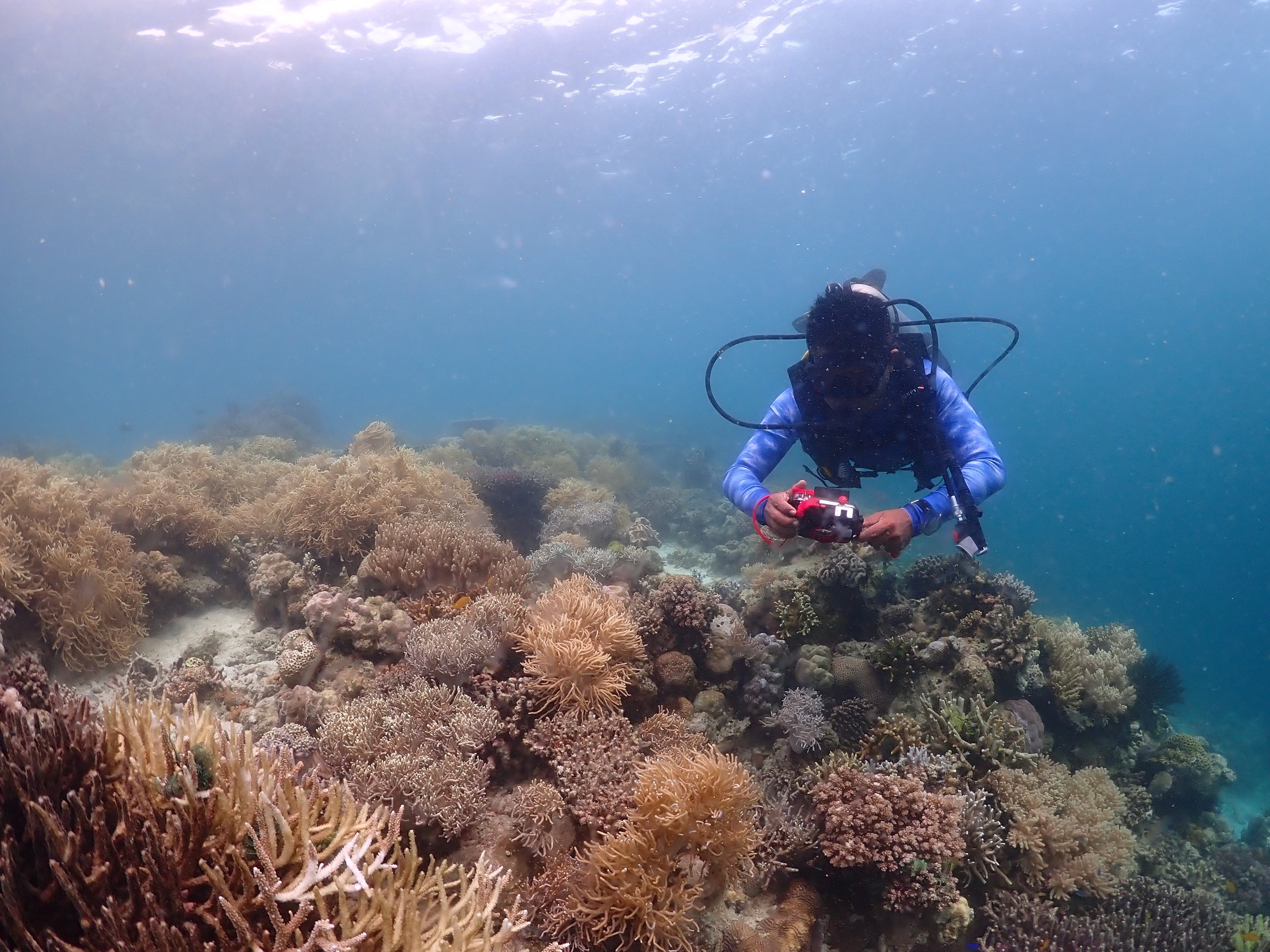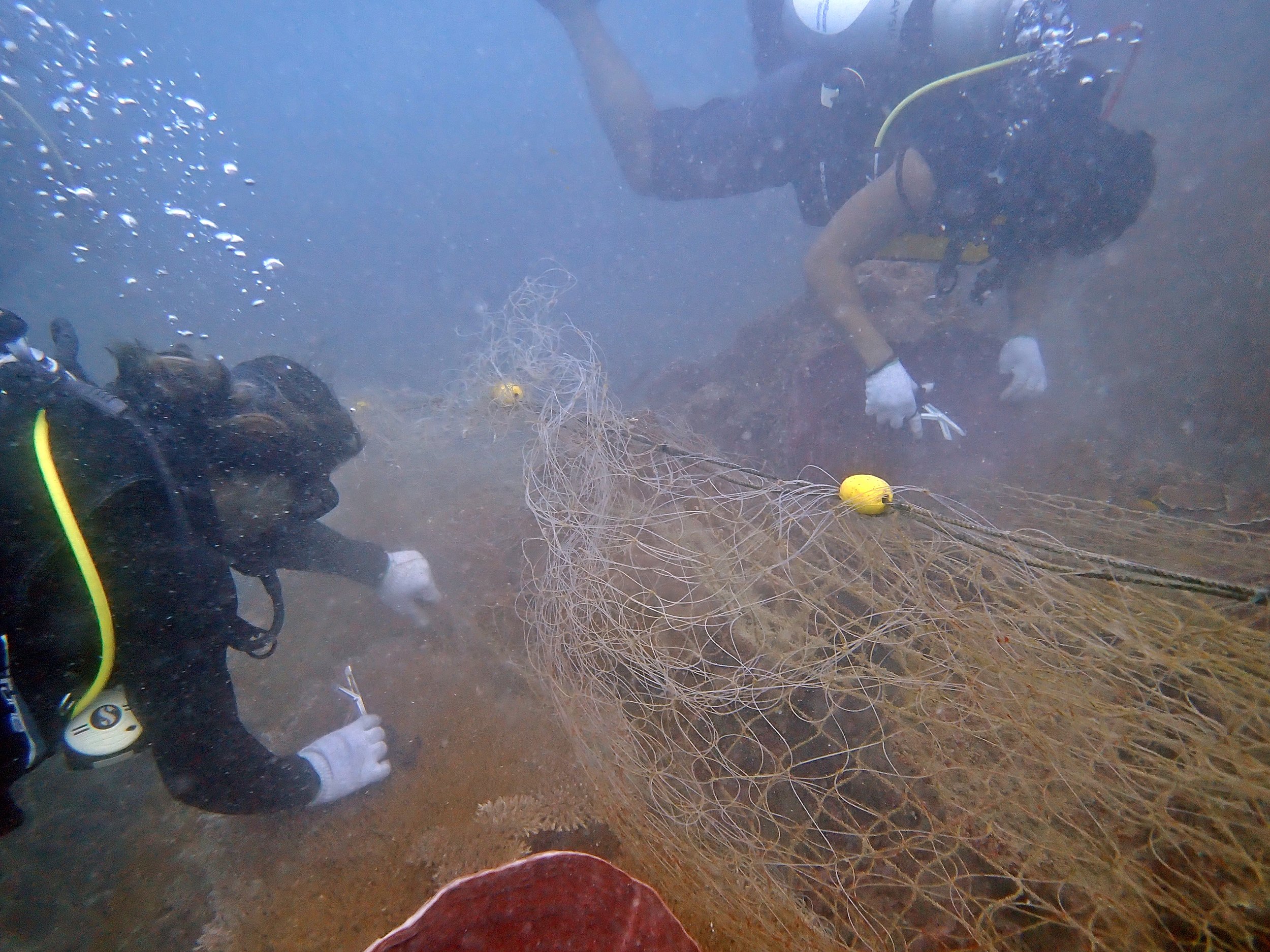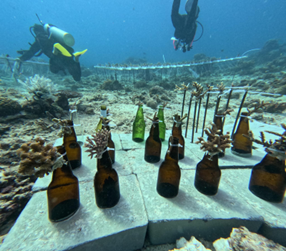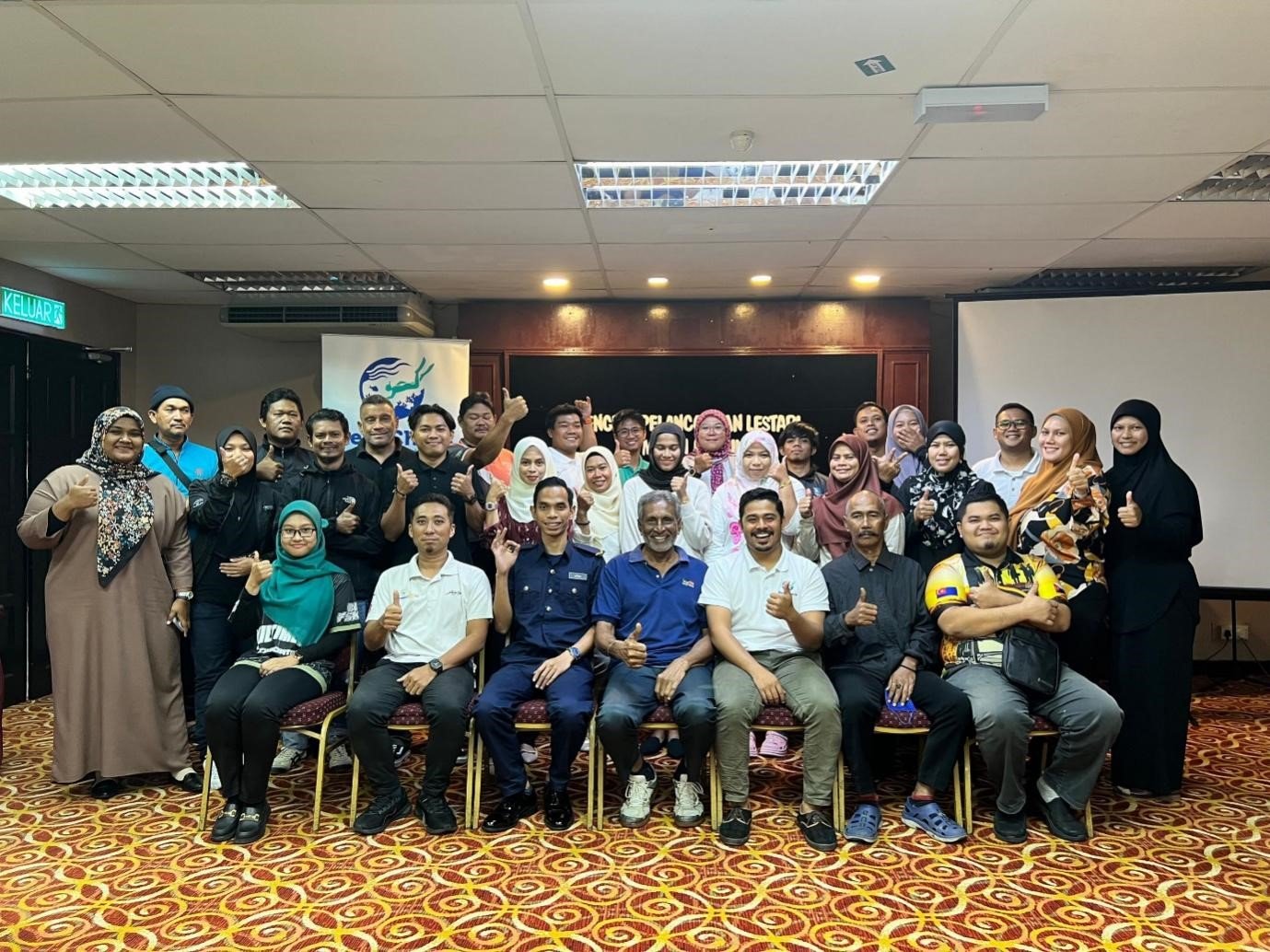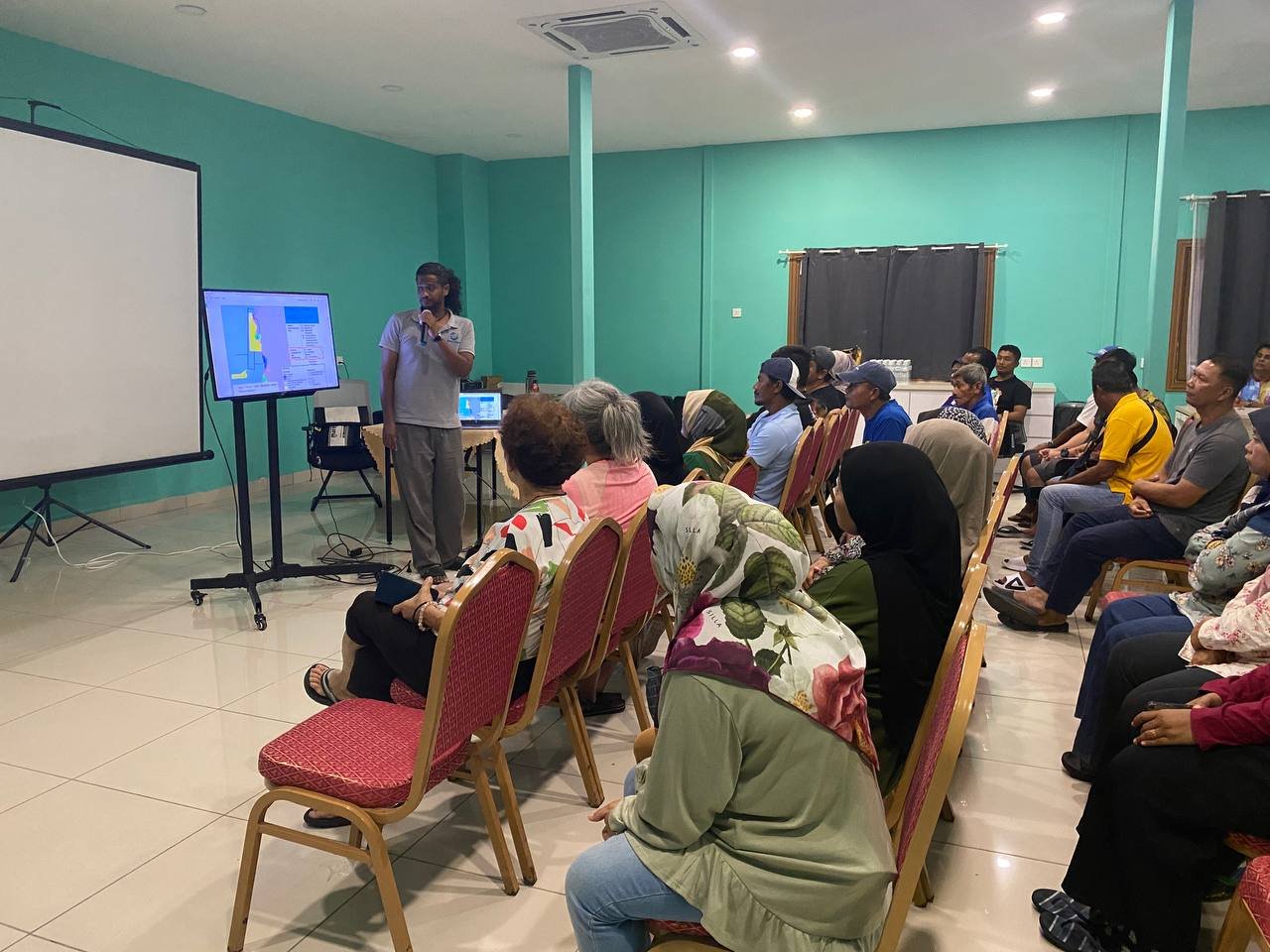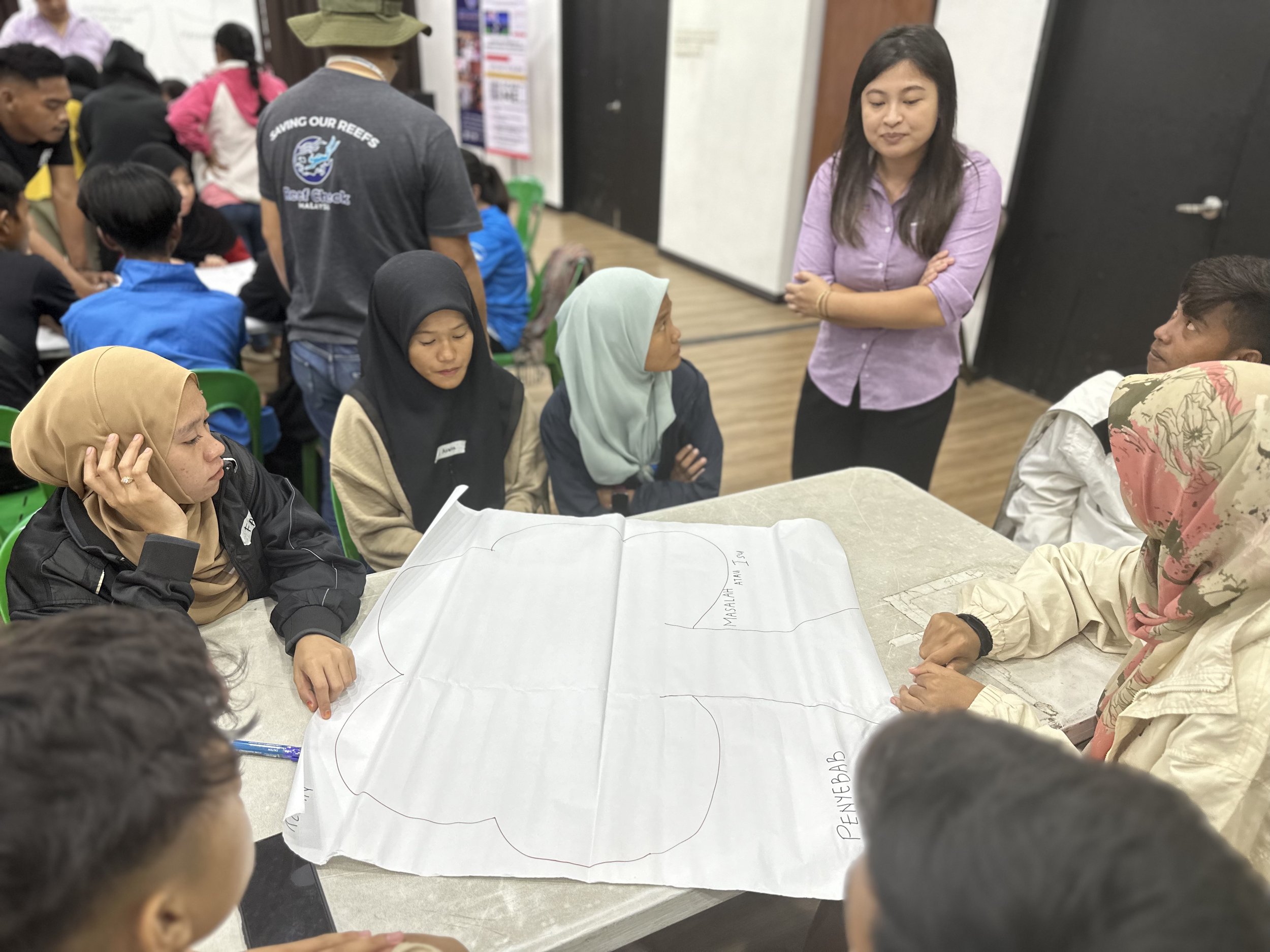2024 marks the second year since RCM began working in Redang Island. Let’s look back and some of our achievements on the island in 2023:
6 Redang Marine Conservation Group (RMCG) members received their Open Water Dive license
5 RMCG members are now EcoDivers and are able to assist with Reef Check Surveys
RMCG EcoDivers successfully conducted Reef Check surveys and collected data from 18 survey sites around Redang Island
RMCG members successfully removed 90 Crown of Thorns starfish (COT), and also removed a whooping 274kg ghost nets from 8 locations around Redang Island
reef rehabilitation and bleaching monitoring
In January, our team on Redang Island returned to our reef rehabilitation sites for a monitoring activity. We were pleasantly surprised to see that our structures deployed in July 2023 have now become a settlement ground for new coral recruits. The coral fragments that were planted are also growing well. Our team conducts monitoring and maintenance every two months, to keep track of the growth and health of the transplanted corals.
In February, 5 members of the RMCG team began conducting the coral reef bleaching monitoring in two selected sites in Redang. Data collected contribute towards an understanding of the bleaching phenomenon, and will be used to help measure the health of the reefs around the waters of Redang Island.
RMCG meets TMCG
In February, our RMCG team and colleagues from Redang Island paid a visit to Tioman Island, to meet our RCM colleagues and Tioman Marine Conservation Group (TMCG) team! The RMCG team spent four days on Tioman, learning and sharing experiences with the TMCG team on various marine conservation efforts and issues. They also had the opportunity to conduct marine biodiversity monitoring as well as visiting “Rumah Hijau” where all the recycling activities are conducted.
RCM has been working to send our colleagues on the ground from one location to another, in an effort to help them learn and understand each other’s work and gain necessary insights which will help them serve their community better.
Consultation sessions with stakeholders
In February, our representative from Cintai Redang were invited to attend the 4th consultation session with regards to the gazettement of Rhu Island in Besut. Those in attendance include various stakeholders, such as government agencies and operators who run tourism businesses on Rhu Island. During these sessions, issues raised in the previous session are addressed and questions are answered, all of which aim to address every aspect to ensure proper and sustainable management of Rhu Island.
A couple of weeks later, our Cintai Redang team, together with the Department of Fisheries (DoF) organised a consultation and discussion session with stakeholders from Redang Island, regarding the management plans of Pantai Teluk Dalam. The three-hour session was a fruitful one, with many responses from the local islanders on various steps that could be undertaken to ensure the smooth progress of this programme.

